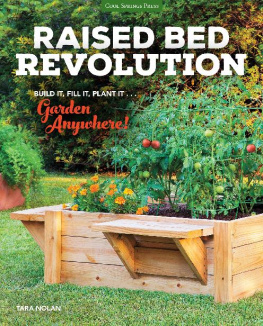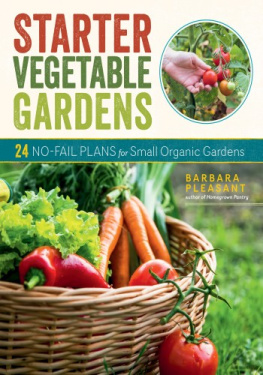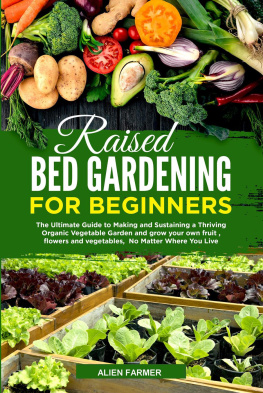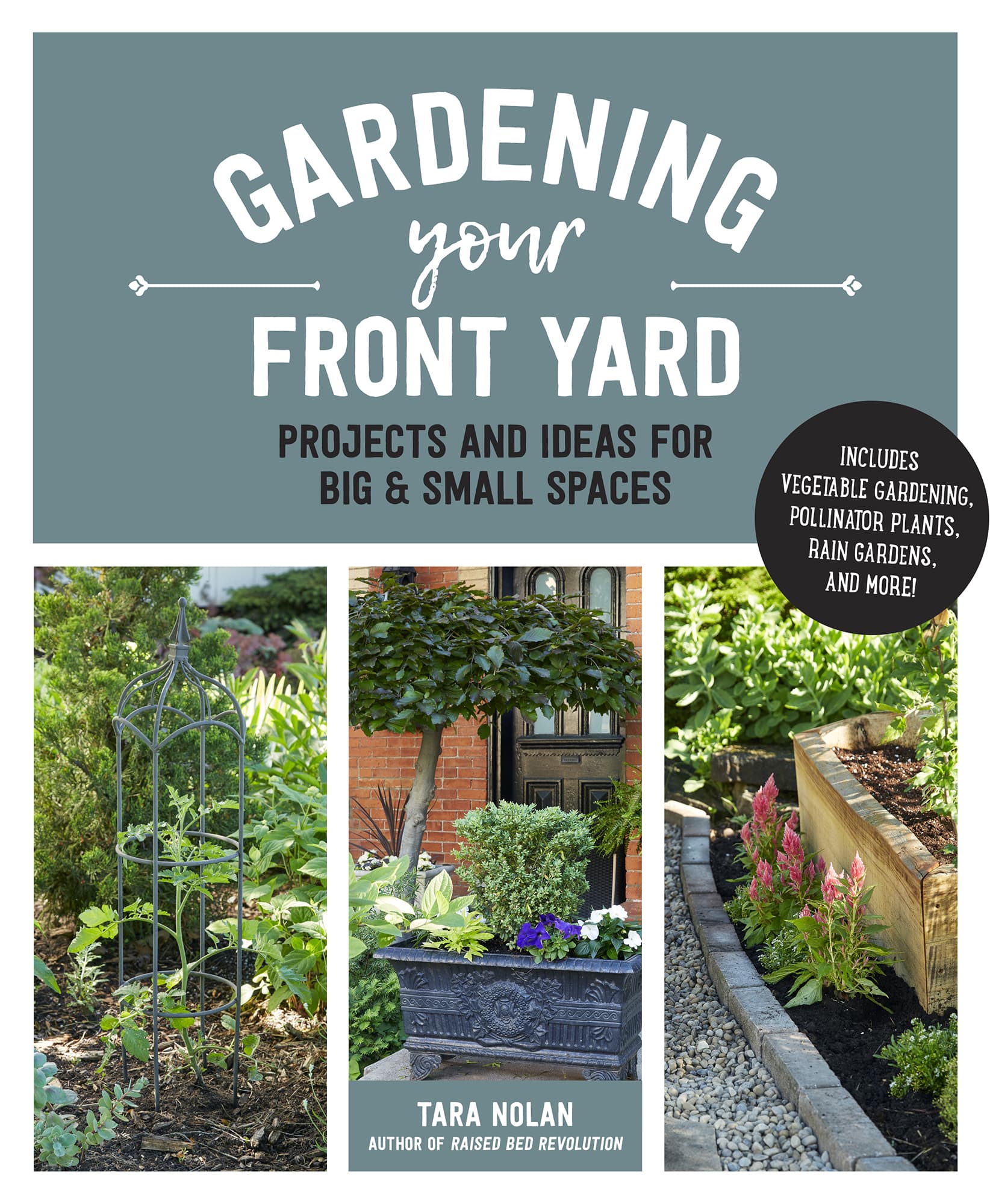Credit: Star Roses & Plants
CHAPTER 1
THE FRONT YARD COMES INTO FOCUS
D ont pick that dandelion! my 7-year-old niece chided me one spring day as we were walking up my driveway. Thats the first source of nectar for bees in the springtime, she addedauthoritatively. I love that someone had taught her that factoidand that it stuck.
There was a time when the sight of a few dandelions would have drawn scorn from neighbors (Im sure it still does, for some) who worried the seeds would float onto their own perfect lawns. But we have come a long way these last few years, as more and more homeowners see the value of putting their front yard gardens to better use. We have moved away from plain green lawns sprayed to eradicate any sign of other lifelike dandelionsnot to mention beneficial insects, which are innocent bystanders.
Walk down many urban or suburban streets these days and, chances are, youll see at least a small mix of homes that have gone the front yard garden routewith food, flowers, or a mix of bothpeppered among the traditional green lawnsboth weed filled and weed free.
Many recent gardening articles have encouraged both seasoned and novice green thumbs to garden with mindfulness for the environment. Mainstream publications arent always that overt in their messaging, but its easy to read between the lines. All these gardening measures have a long-term goal of helping the Earth: Plant for pollinators. Plant to save the monarch butterfly. Plant to save the bees. Include drought-tolerant species to conserve water. Look for native plants at local nurseries. Capture rainwater in rain barrels to hydrate your plants. Eat local by supporting nearby small-scale farmers. Eat local by growing your own vegetables. And, to circle back to the humble dandelion, you dont have to pull all the weeds because not all weeds are bad.
These are just a few of the directives that have crept out of traditional gardening publications and into mainstream reading. Turf grass starts to look relatively useless when you apply all these ideas to your own yard and make a plan to do things such as grow food, support wildlife, and capture rainwater responsibly.
Coincidentally, while researching for this book, a few timely headlines popped up and confirmed the zeitgeist of this front yard shift. Within a 3-week period, the New York Times alone featured three lawn-averse articles: Im Done Mowing my Lawn: A Manicured Swath of Grass May be the Ultimate Symbol of Suburbia, but Perhaps it Shouldnt Be; One Thing You Can Do: Reduce Your Lawn; and To Nurture Nature, Neglect Your Lawn: Why Poison the Earth When You Can Have Wildflowers at Your Feet and Songbirds in Your Trees Without Even Trying? Around the same time, Grist, an online nonprofit environmental magazine, didnt beat around the bush: Lawns are the number 1 irrigated crop in America. They need to die. Um, point taken! And dont even get me started on synthetic grass.
Credit: Donna Griffith
Gardening the front yard is not a fringe concept adopted by a few forward-thinking folks. I feel as though well be seeing more and more innovation when it comes to front yard design and planting. And, if you think youll miss the feeling of cool green grass between your toes on a hot summer day, look for alternative, sustainable grass varieties that require less water and maintenance.
Now is an exciting time for front yard gardens. There are just so many possibilities with purposes beyond pleasing your neighbors or potential homebuyers. In fact, the idea for this book was germinated over a discussion about how front yards are, once again, becoming social spaces. This discussion blossomed into a broader conversation about all the other modern concepts suddenly being applied to front yards, including veggies, water- and drought-driven plant choices, and cut flowers.
In my book Raised Bed Revolution, I was able to fit all the broader ideas together, like the pieces of a puzzle. Raised beds for big spaces? Check. Raised beds for small spaces? Check. Upcycling ideas, season extenders, and trellising options? Check, check, check. But with Gardening Your Front Yard, every time I crossed off a concept to include from my list, I found a new idea. I feel like the inspiration Ive gathered is an unlimited mood board or scrapbook of ideas that can forever be expanded upon.
THE EVOLUTION OF CURB APPEAL
The basic goal behind curb appeal is to make your home and front yard attractive from the streetespecially for potential homebuyers. Its about first impressions. Setting aside the house itself, a universally accepted aesthetic of what constitutes a desirable front yard evolved and then stayed put, frozen in time: a tidy lawn, with perhaps a tree or two, and well-manicured gardens with a mix of familiar shrubs, annuals, and perennials.
However, after being inspired to turn the front yard of my first home into a garden, I realized that curb appeal is a very individual response, much like our clothing choices or interior design. Although I thought what Id done looked pretty good for an amateur and neighbors had commented on how much they liked it, Im sure others grumbled to themselves about how awful it looked or worried that it was bringing down the neighborhood property values.
Since my first little foray into front yard gardening, Im seeing more and more front yard gardens that make efficient use of the space, often with a purpose, such as cut flowers or wildflower gardens; vegetable beds; gardens to attract wildlife; eco-friendly solutions, like rain gardens; and more established patios that take front yard socializing beyond the traditional porch. Curb appeal has evolved beyond a standardized aesthetic.
In other words, the definition of curb appeal has evolved. Where it once implied the homeowner had to create a front yard garden to suit other peoples tastes, both day-to-day and for potential buyers, now it has relaxed. Because if youre not planning to sell your house anytime soon, why not create a front yard garden that suits your lifestyle and your preferences?
In short, lets all agree curb appeal is in the eye of the beholder. And, sometimes, the point of view is from inside looking out.
LET THE BRAINSTORMING BEGIN
F or this book, I drew from a variety of sources and inspiration. I tapped into other peoples imaginations and found that the process sparked fresh ideas of my own. I knocked on a few doors in my town to see if I could get permission to photograph the owners gardens. I consulted experts, some of whom Ive never met, but follow on social media (most likely Instagram). I even delved into some of my past travels, including the 2017 Royal Horticultural Society Chelsea Flower Show, where a handful of British garden designers made an indelible impression.
A front yard garden, like any garden, evolves. Although its easy to get excited about all the possibilities, its also easy to become overwhelmed by the mammoth task of overhauling a property, whether its the size of a postage stamp or a hobby farm. Whether youre working from your own design or plan or one thats been drawn up by a professional, dont think you have to complete the project all at once. Choose a chunk of your vision to work on each season, such as laying down cardboard to smother grass in the fall so an area is ready for planting come spring. Then, slowly build on it over time.











